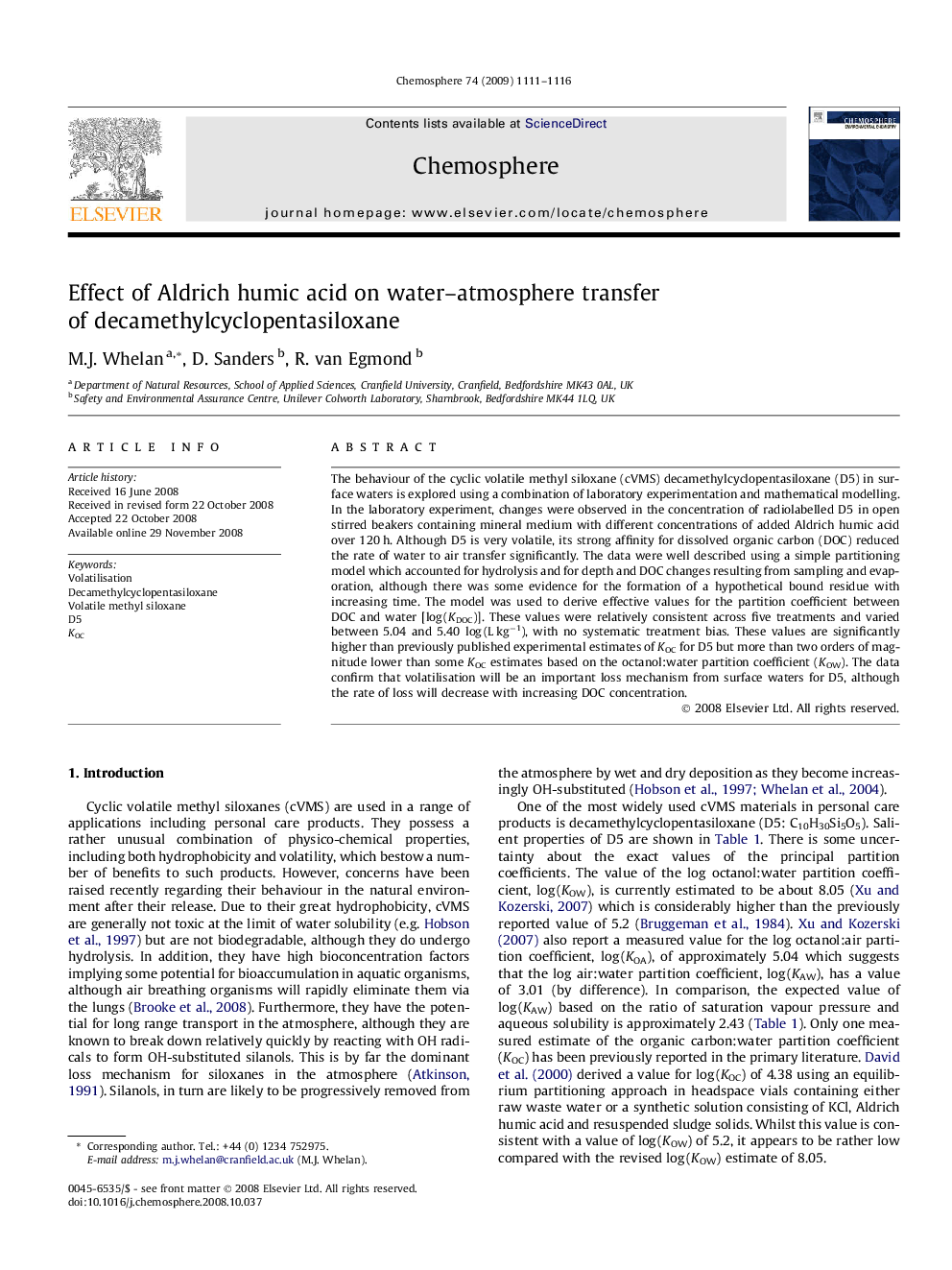| Article ID | Journal | Published Year | Pages | File Type |
|---|---|---|---|---|
| 4413271 | Chemosphere | 2009 | 6 Pages |
The behaviour of the cyclic volatile methyl siloxane (cVMS) decamethylcyclopentasiloxane (D5) in surface waters is explored using a combination of laboratory experimentation and mathematical modelling. In the laboratory experiment, changes were observed in the concentration of radiolabelled D5 in open stirred beakers containing mineral medium with different concentrations of added Aldrich humic acid over 120 h. Although D5 is very volatile, its strong affinity for dissolved organic carbon (DOC) reduced the rate of water to air transfer significantly. The data were well described using a simple partitioning model which accounted for hydrolysis and for depth and DOC changes resulting from sampling and evaporation, although there was some evidence for the formation of a hypothetical bound residue with increasing time. The model was used to derive effective values for the partition coefficient between DOC and water [log (KDOC)]. These values were relatively consistent across five treatments and varied between 5.04 and 5.40 log (L kg−1), with no systematic treatment bias. These values are significantly higher than previously published experimental estimates of KOC for D5 but more than two orders of magnitude lower than some KOC estimates based on the octanol:water partition coefficient (KOW). The data confirm that volatilisation will be an important loss mechanism from surface waters for D5, although the rate of loss will decrease with increasing DOC concentration.
